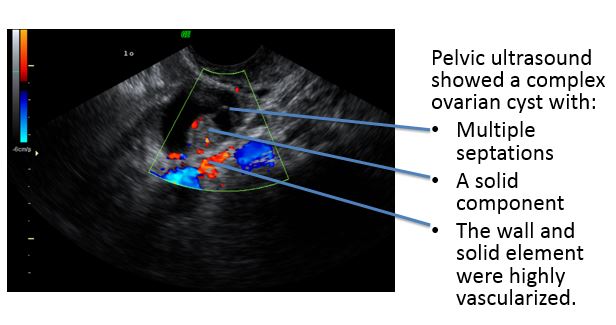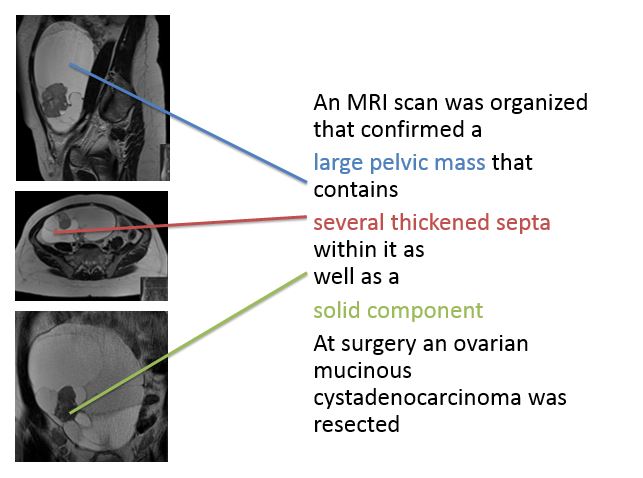A 63-year-old nun complained to her GP of swelling of her lower abdomen. She was referred for an ultrasound.
-
1. What does the pelvic ultrasound show?
Show Answer
Correct answer:
 Pelvic ultrasound showed a complex ovarian cyst with:
Pelvic ultrasound showed a complex ovarian cyst with:
- Multiple septations
- A solid component
- The wall and solid element were highly vascularized
-
2. What factors in her menstrual history affect the risk of ovarian cancer?
Show Answer
Correct answer:
- Early menarche
- Late menopause
- Nulliparity
are all associated with a higher risk of ovarian cancer.
She had an MRI scan prior to planned surgery.
-
3. What does the MRI scan show?
Show Answer
Correct answer:
An MRI scan was organized that confirmed a large pelvic mass that contains several thickened septa within it as well as a solid component.

-
4. What tumour marker would you request?
Show Answer
Correct answer:
Serum CA-125
Epithelial ovarian cancers usually produce the glycoprotein tumour marker CA-125. 80% of patients with advanced ovarian cancer have raised CA-125 levels in the blood. High levels can also occur with almost any gynaecological, pancreatic, breast, colon, lung or hepatocellular tumour. CA-125 levels also are elevated in a number of benign conditions including endometriosis, pancreatitis, pelvic inflammatory disease and peritonitis. So a raised CA-125 level is not sufficient for the diagnosis of ovarian cancer but changing levels may be used to monitor treatment and in follow-up after treatment.
At surgery an ovarian mucinous cystadenocarcinoma was resected. She had a total abdominal hysterectomy, bilateral salpingo-oophorectomy and omentectomy. Microscopic tumour deposits were present in the omentum, making the tumour stage III. Following surgery she was treated with adjuvant combination paclitaxel and carboplatin chemotherapy and prayer.


